
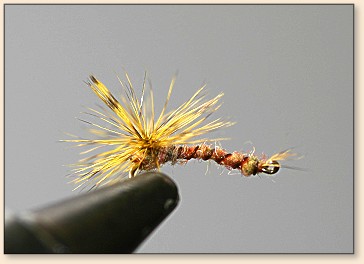 |
|
Cranky Cripple, PMD
|
|
The hook should be cranked about twenty degrees,
about a third of the way back from the eye.
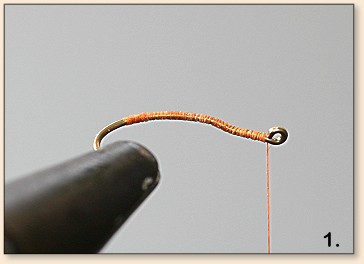 1. Lay a bed of thread from opposite the barb to the eye of the hook.
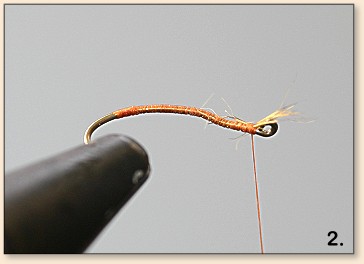 2. Tie in a half dozen hares mask guard hairs, angled toward the tyer.
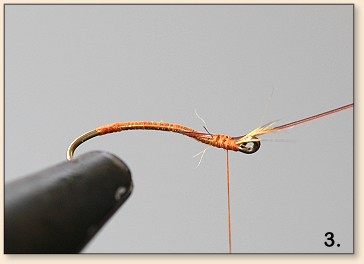 3. Tie in the monofil for ribbing and later it will be the post.
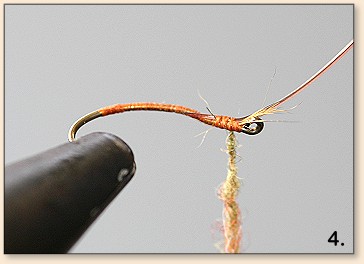 4. Dub thread lightly with body mixture for the abdomen.
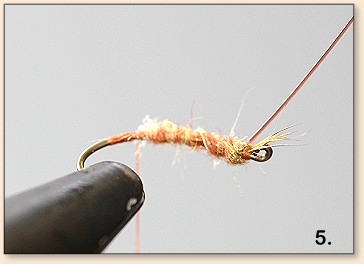 5. Dub the abdomen.
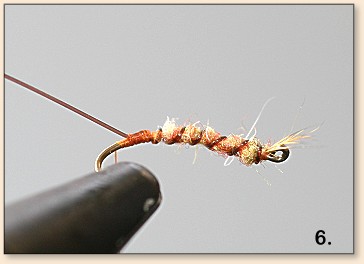 6. Rib the abdomen with the monofilament and tie in...DO NOT CUT OFF.
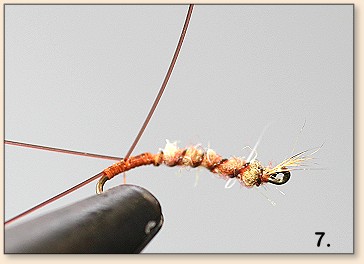 7. Turn a mono loop and tie it in firmly with the tag end over the vise. The mono loop should be angled toward the tyer.
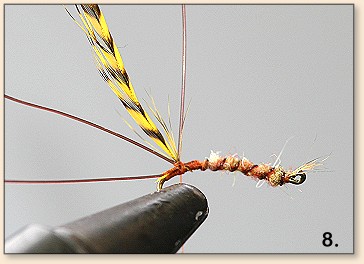 8. Tie in the hackle at the base of the loop/post.
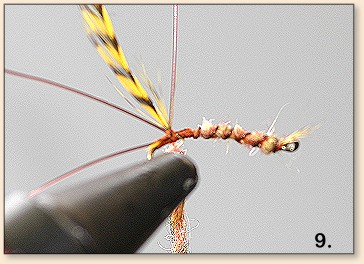 9. Dub thread with thorax mixture.
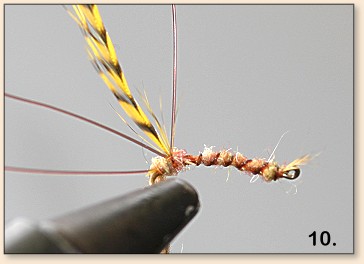 10. Wrap the dubbing to cover thorax finishing at the junction with the abdomen.
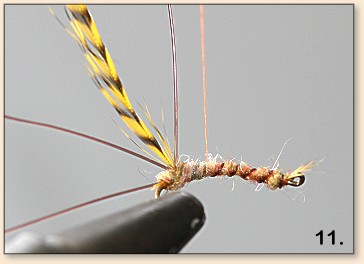 11. Whip finish between Thorax and abdomen and cut off thread.
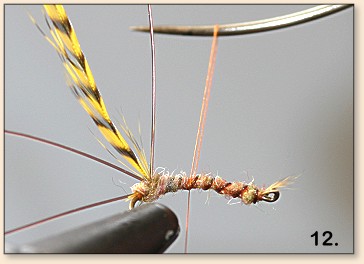 12. Spiral the hackle around one side of the mono loop making sure there is minimal slack.
 13. Support the loop with your finger and let the hackle plier hang down through the loop to keep tension.
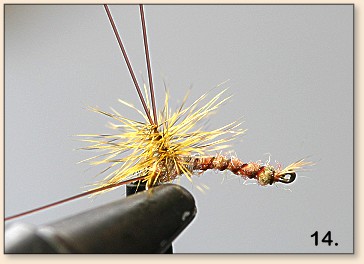
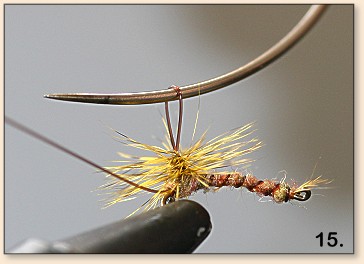
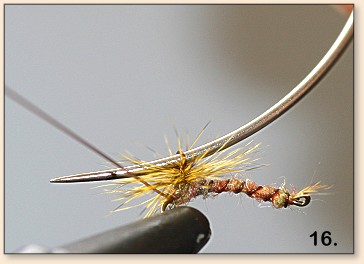 14. Support the loop with a dubbing needle; pull on the tag end of the mono to close the loop. As the loop disappears, remove needle and hold the pliers to retain tension. Pull home the mono.
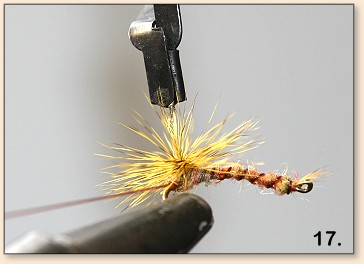 15. Release the pliers and cut off the monofilament. The fly is complete. 16. Completed fly.
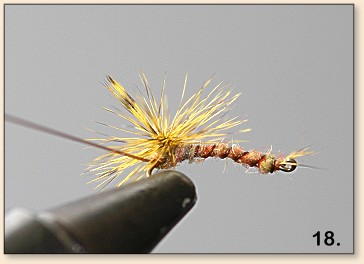
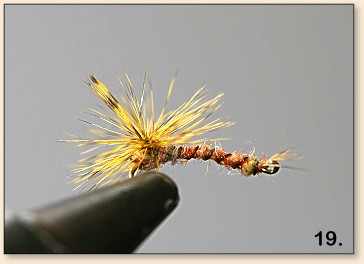
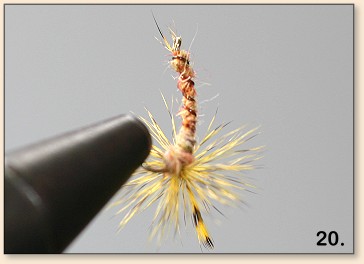
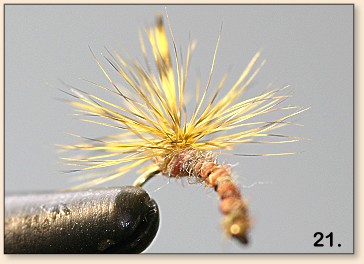 Tie it and try it - always degrease the tippet. ~ Roy Christie
About Roy: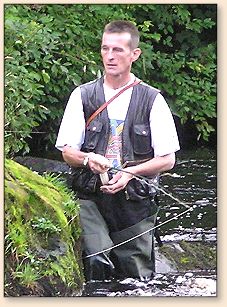 Born 1953 near the Giant's Causeway, Northern
Ireland; started fishing when I was four or five,
flyfishing a few years later, tying flies since
I was about ten years old, bred bantams ducks
and pheasants for their feathers. Self taught
tyer, learned from Hanna, Skues, Stewart and
Pritt. There were fairies at the bottom of the
garden and a trout stream at the end of the
first field.
Born 1953 near the Giant's Causeway, Northern
Ireland; started fishing when I was four or five,
flyfishing a few years later, tying flies since
I was about ten years old, bred bantams ducks
and pheasants for their feathers. Self taught
tyer, learned from Hanna, Skues, Stewart and
Pritt. There were fairies at the bottom of the
garden and a trout stream at the end of the
first field.When the stream was dredged in the late 1960's I rebuilt it as a self cleaning entity producing a good head of brown trout. Founder member of the Wandle Wands, the self-appointed group for restoration of the River Wandle, a tributary of the Thames in London UK, once a designated sewer, now producing wild fish in excess of ten pounds. My river flies are mainly nymphs from Skues; my Avon Special emerger, developed for English chalkstreams 1981; my Reversed Parachute and Cranky Cripple emergers, similarly designed for those canny southern browns; my EasyPeasyUSD for presenting an effective light pattern to fish feeding on the adult insects and the Flat Spent Spinner, for the tail end of the hatch. Favourite flies include the hare's ear & copper wire nymph; CDC & Elk, Skues' Little Red Sedge and various homespun caddis patterns for pupa and adults. Ambitions – to ensure my grandchildren have a beautiful planet to live on and to live forever by an ever changing stream full of trout grayling and salmon. Other minor obsessions - Citroen DS and Sharpes Canes. ~ Roy
|
|
|
|
|